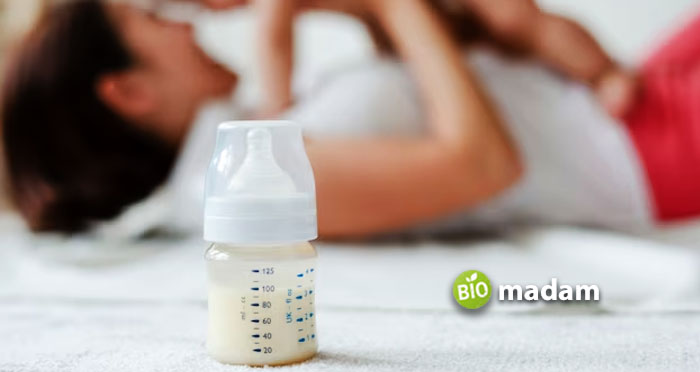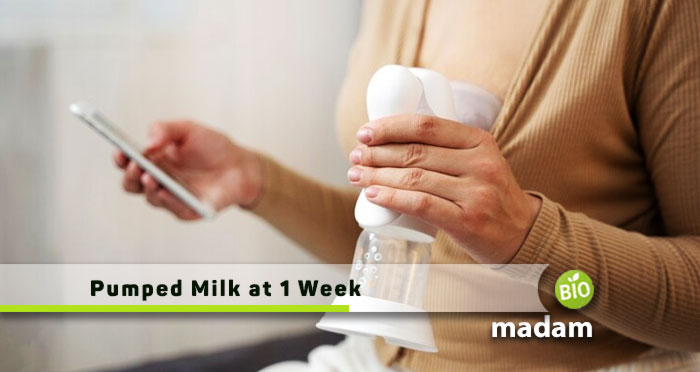Entering the world of motherhood sparks many questions, and for new moms, figuring out how much milk to pump at one week postpartum is a big one. In the early days of breastfeeding, knowing what typical and keeping things realistic is is super important. The first week lays the groundwork for a smooth breastfeeding experience, and understanding how much milk to pump during this time can ease worries.
Let’s take a closer look at the basics of pumping in the first week, sort through the different amounts, and share some tips to help new moms feel confident and informed on their breastfeeding journey.
Understanding Newborn Feeding Patterns
To comprehend the expectations of pumping at one week, it’s crucial to appreciate the feeding patterns of newborns. At this stage, a baby’s stomach is about the size of an apricot, holding only 1.5 to 2 ounces of breast milk at a time. Full-term babies typically consume 1 to 2 ounces per feeding during the first week, with their feeding volume gradually increasing by 4 to 5 weeks. These insights set the stage for realistic expectations in the initial stages of pumping.
Pumping Guidelines at One Week Postpartum
In the early days of motherhood, establishing a pumping routine aligning with the baby’s feeding schedule is essential. Aim to pump every two to three hours, mirroring the newborn’s natural rhythm. The goal is to pump two to three ounces per session, totaling around 24 ounces in a 24-hour period. It’s important to note that these quantities might need adjustment for mothers blessed with multiples, such as twins or triplets.
Managing Expectations at One Week
Variability in pumping amounts is normal and influenced by several factors, including the time of day, the baby’s age, and the mother’s breast storage capacity. It’s crucial for mothers to understand that pumping less than expected at one week is normal. Milk production is a gradual process, and as the baby’s demands increase, so will the amount of milk expressed per session. Patience and persistence are key during this learning phase.

Training Your Body to Respond to the Pump
Pumping at one week postpartum might yield minimal results, with mothers expressing as little as half an ounce per session. This is entirely normal, considering that both the milk supply and the body’s response to the pump are in the early stages of development. With time and practice, mothers will find that their bodies adapt, and the quantity of milk expressed will increase.
Established Milk Supply (6-8 Weeks Postpartum)
Around 6 to 8 weeks postpartum, mothers can expect a more stabilized and regulated milk supply. At this point, normal pumping amounts range from 0.5 to 2 ounces for both breasts per session. This milestone marks a significant transition from the initial stages of breastfeeding, reflecting the maturation of the mother’s milk production.
Exclusively Pumping Considerations
For mothers exclusively pumping, the focus shifts from session quantities to the total milk expressed in a 24-hour period. Ideally, the amount expressed should align with the baby’s nutritional needs. By the end of the first week, mothers who exclusively pump often produce around 500 mLs or 16.5 ounces of breast milk per 24 hours, providing valuable insight into the average production during this phase.
Strategies for Increasing Milk Production
Understanding that milk production is fundamentally about supply and demand is crucial. So, follow the strategies below:

- Frequent Nursing Sessions: Encourage more frequent nursing sessions, aiming for eight or more per day, to stimulate increased milk production and allow the baby to effectively empty the breasts.
- Pump Between Feedings: Incorporate pumping sessions between breastfeeding sessions to further empty the breasts, providing additional stimulation to maintain and increase milk supply.
- Double Pumping: Consider using a double electric breast pump for more efficient and simultaneous expression from both breasts, saving time and enhancing the overall effectiveness of the pumping session. You can find numerous best electric breast pumps, just like breastsfriendly has displayed.
- Hands-On Pumping or Breast Massage: Use hands-on pumping techniques or breast massage during sessions to ensure thorough breast drainage, stimulating milk ejection and improving overall milk removal.
- Galactagogues: Explore the use of galactagogues such as fenugreek, blessed thistle, and oatmeal after consulting with a healthcare provider to enhance milk production.
- Hydration and Nutrition: Maintain adequate hydration by drinking plenty of water and consuming a well-balanced diet, including lactogenic foods, to support overall health and milk supply.
- Skin-to-Skin Contact: Embrace skin-to-skin contact during and between feedings, as the close physical connection triggers hormonal responses that support milk production.
- Adjust Pumping Schedule: If exclusively pumping, consider adjusting the pumping schedule to align with the baby’s natural feeding times, maintaining a consistent demand for milk production.
So, can I Start Pumping at 1 Week?
Certainly! Commencing pumping at one week postpartum is feasible. Start gradually with short sessions, ensuring your baby’s breastfeeding routine is established. It’s advisable to seek guidance from a healthcare provider for a personalized approach.
In the initial week of motherhood, pumping may yield modest milk amounts, yet it’s a part of the natural breastfeeding journey. Patience and understanding the newborn’s needs are crucial in overcoming initial challenges, and fostering a strong foundation for success. Every mom’s journey is unique, and seeking professional support ensures a positive and fulfilling breastfeeding experience.

People call me Domonique Smith in Ross! I was always fond of helping people, so opted an MBBS degree to pursue my passion as my career. My major interests fall in dealing with pregnant ladies and helping them in the best of my wills for their comfort. I am further planning to choose Gynecology as my major, so wish me luck!

